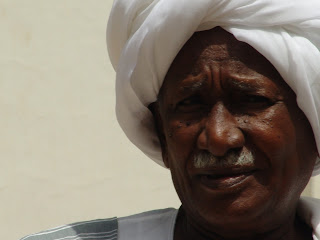A piece published in the September edition of the New Internationalist.
When Sudan’s Islamists staged their coup against the government of Sadiq al-Mahdi in 1989, they relied on militia formations from their student and youth wings to patrol the streets of the capital, Khartoum, and guard their freshly snatched power from the political establishment. Since then, the government of President Omar Hassan al-Bashir has survived an arc of rebellions in the country’s peripheries, a fratricidal split in the ruling National Congress Party (NCP) in 1999, and the breakaway of South Sudan to independence in 2011. The longevity of the regime has baffled both its opponents at home and the experts who follow Sudan’s affairs from abroad.To achieve its breakthrough and maintain its grip on power, the NCP relied on a formula that unites a siege ideology of Arab Muslim identity, with sharia law as its grammar, and oil-greased patroage politics. But the loss of oil rent to the independent South Sudan dealt a considerable blow, precipitating an economic crisis that left the government ‘bankrupt’, according to the diagnosis of the country’s minister of finance.As the 23rd anniversary of the 1989 ‘Salvation Revolution’ approached this June, the NCP regime found itself battling an amorphous mass of protesters in Khartoum and smaller urban centres, mostly young women and men whose political memory registers no other ruler than President Bashir. Rather startled by the brazen show of defiance, Bashir, distinguished as the only incumbent head of state to be indicted by an international court, christened the protesters against his long spell in power ‘outcasts’. Opposition activists embraced the term, just as they plagiarized a jibe attributed to Nafie Ali Nafie, an NCP high priest who once likened attempts at regime overthrow to the impossibility of licking one’s own elbow, by turning it into a rallying cry for another day of demonstrations: ‘elbow-licking Friday’.What is usually presented as one wave of anti-regime agitation draws from at least three distinct resources: an urban underclass struggling to eke out a living under adverse economic conditions; students and young professionals frustrated by the patriarchal lid on their political ambitions; and second-generation diaspora Sudanese tweeting for the homeland. Communication between the three constituencies is at best troubled, often requiring the mediation of an interpreter. The government’s security apparatus has ridiculed the fluent English-speakers of the third category as online ghosts and sought to contain the second with volleys of teargas, rubber bullets and streamed passage through its detention centres. The first, however, were received with live ammunition.




No comments:
Post a Comment